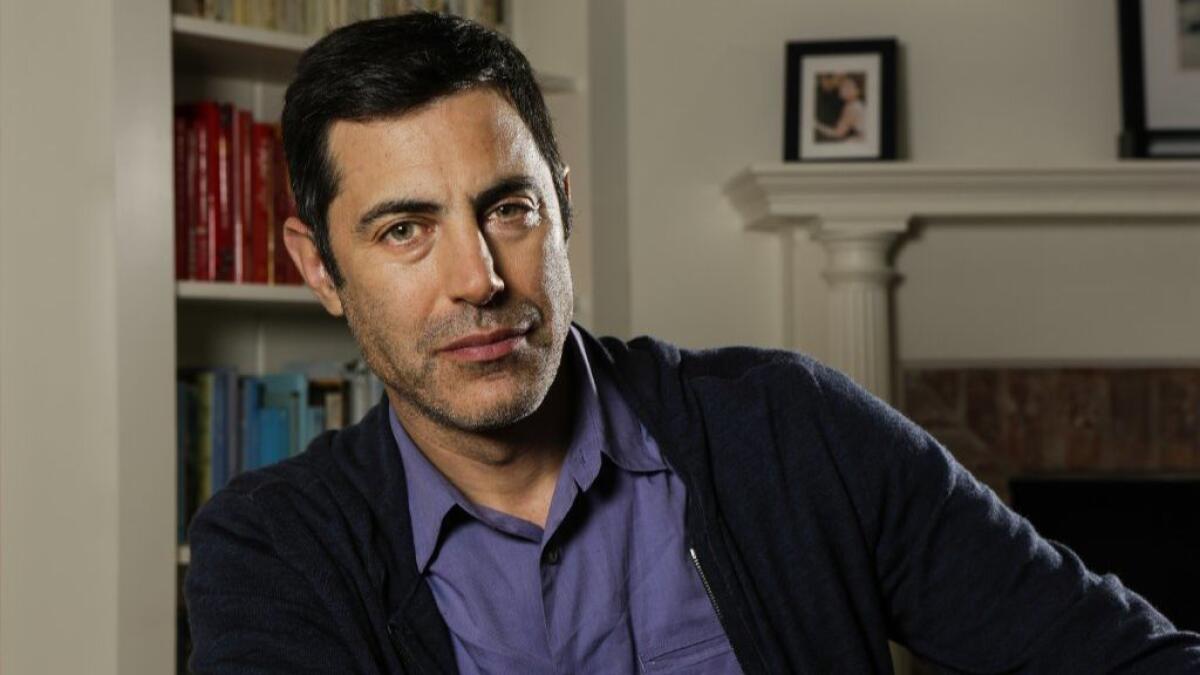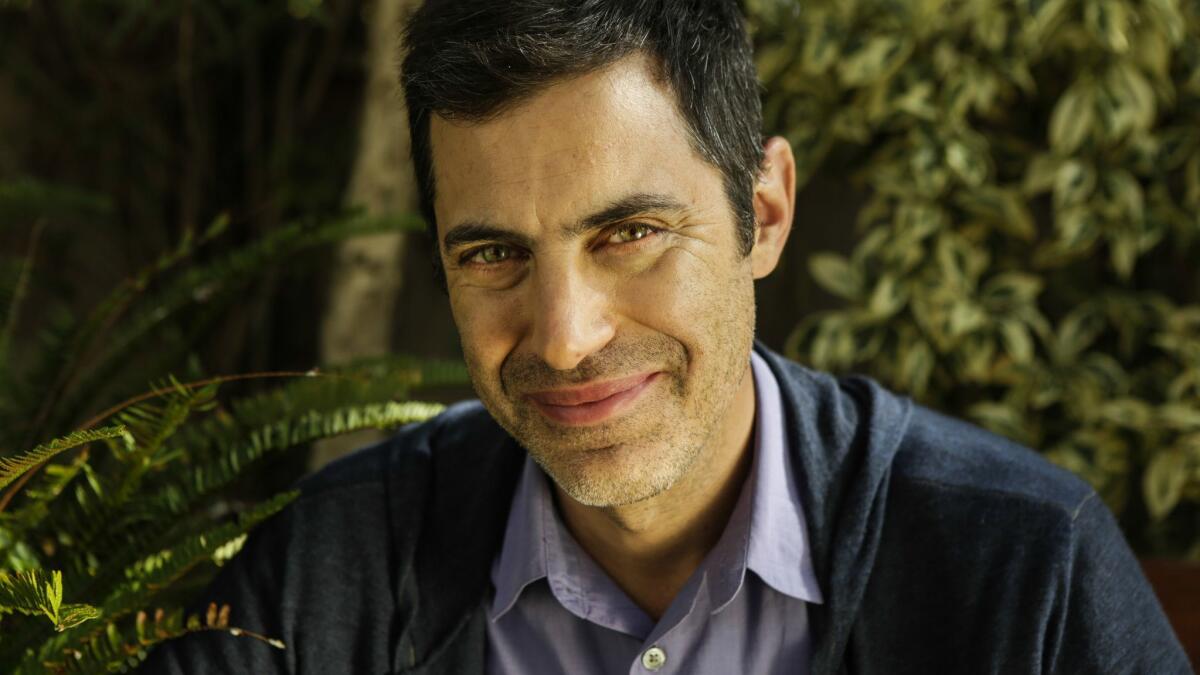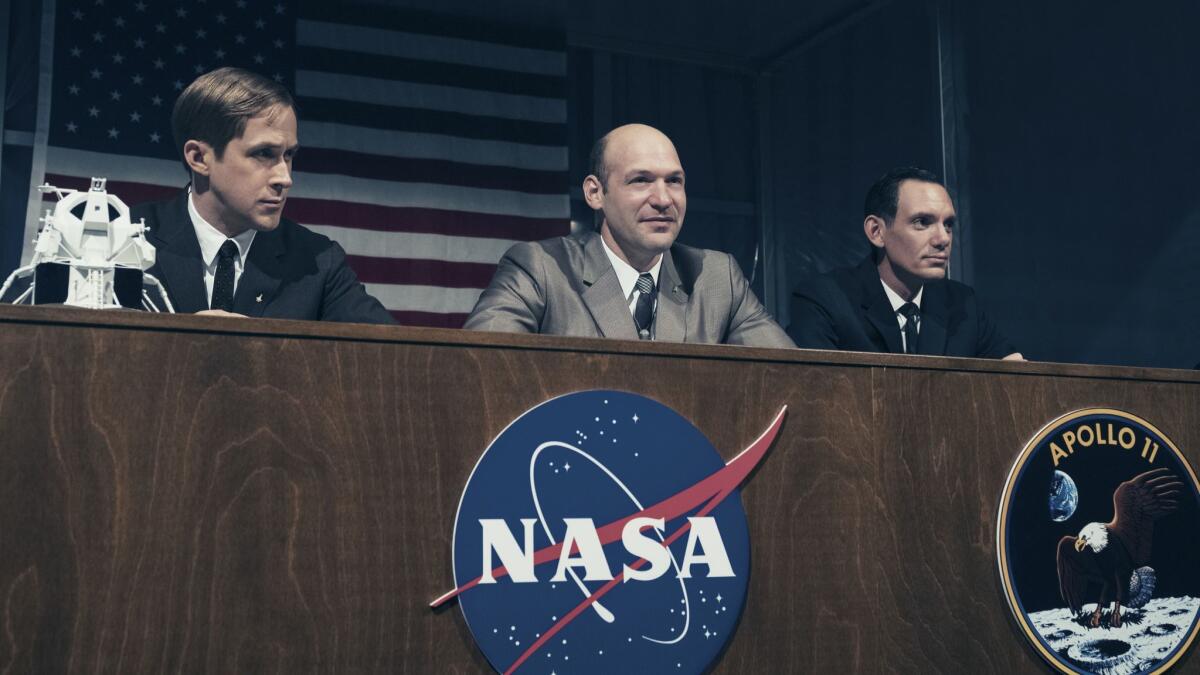The challenge of writing ‘First Man’ took four years and a crash course in aeronautical engineering

Damien Chazelle approached me to work on a movie about Neil Armstrong in 2014. It was a bit of a tough time. I’d loved working on “The Fifth Estate,” but it hadn’t been well-received by critics or at the box office. I’d written several drafts of “Spotlight” with Tom McCarthy, but the star we’d attached had dropped out so it wasn’t clear the movie would go. Truth be told, I didn’t know where I was going to get my next job.
From the outset, Damien wanted to tell a story that got underneath everything we thought we knew about the space program. A story that would show how dangerous the effort really was, how much these astronauts and their families had sacrificed in order to try to achieve the impossible. My biggest question for Damien was why he needed me. He’s a fantastic writer — why hire someone else? Damien explained he had a movie musical he wanted to shoot in 2015. And he imagined that the project would require a lot of research. He wanted a partner.
So I got to work.

I quickly found I was in over my head. Way over my head. On an early visit to NASA Headquarters in January 2015, Bill Barry, the chief NASA historian, pointed to a photo of Sergei Korolev, one of the founders of the Soviet space program, and started quizzing me on Russian rockets. On a trip to Johnson Space Center a few months later, it was Joe Engle, the last living X-15 pilot, who started peppering me with facts about the aircraft’s lift drag ratio and dead stick landings; after which Frank Hughes, who retired as head of astronaut training at NASA, started asking whether I really understood the challenge of docking with the issue-prone Agena docking satellite.
No. The answer was no. I didn’t know the first thing about any of this. And it quickly became apparent that I was going to have to all but get a master’s in aeronautical engineering if I was going to accurately dramatize Neil’s X-15 flight, as well as his LLRV training exercise and his two space missions.
And that was going to be the easy part.
The hard part was going to be Neil. Tackling an icon is always tough — people have preconceptions about icons. And Neil was a private man — so private that many close to him didn’t know major details about his life, like the fact he had lost a 2-year-old daughter to a brain tumor. As his biographer Jim Hansen says, Neil was an “emotionally tightly packaged” man. Which meant getting underneath his skin was going to be a huge challenge.
So, while Joe Engle was teaching me how to land an X-15 that had sailed 20 miles downfield and Frank Hughes was teaching me how to land a Lunar Module that was running very low on fuel, I had Jim Hansen introduce me to Neil’s sons, Mark and Rick. And with their help, I started trying to get to know their father, trying to understand what made Neil tick.
The more we researched, the more it became clear to Damien and I that the primary story was one of grief. That Neil and Janet, like all these NASA families, had been faced with repeated losses and had been repeatedly forced to push down their feelings and move forward. But this involves its own level of sacrifice. Rick Armstrong would say, “A lot of times you’d ask Dad a question and he just wouldn’t answer.” And Janet told us that from Neil, the word “no” was a long argument. As she said, “Neil was not one to share.”
I suppose it’s provocative to turn humankind’s greatest triumph into a story of loss. To make the journey to the moon the story of a man’s journey inside himself. To show this iconic hero becoming further and further withdrawn over the course of his mission so that he can have the strength to move forward with his wounds.

It’s an unfamiliar perspective on a story and a man we all think we know. One that might ruffle folks. And in order to convince people it was remotely accurate, we’d have to demonstrate a high level of accuracy in the movie as a whole.
So I did what I had done on “Spotlight” — I sent early drafts of the script to Neil’s family and colleagues. And, not unlike Neil’s journey to the moon, my journey on the script was marked by early failure. Astronauts Dave Scott and Mike Collins were pretty tough. I’d gotten all sorts of technical details wrong. And some of my characterizations of Neil were off. An early scene had Neil repeatedly slamming a phone down on the receiver after finding out about the Apollo 1 fire. Jim Hansen and everyone else who knew Neil were up in arms. Neil would never do that.

“La La Land” star Ryan Gosling and Oscar-winning director Damien Chazelle are back together for a very different kind of story: a bio-pic about Neil Armstrong, the first man to walk on the moon. “The Crown” star Claire Foy plays Armstrong’s wife in
What did we do? What Neil would have done. I dug deeper into the technical side, studying transcripts and going back to Frank Hughes and Joe Engle with question after question. I played with a more subtle way for Neil to show the pain he must have felt after Apollo 1. And then I sent the script out again. I did this several times. I even convinced Damien to let me bring Mark and Rick and Mike Collins and Joe Engle and Frank Hughes into the editing room. They watched the film four weeks before picture lock and gave us 10 pages of accuracy notes, most of which we were able to execute.
Needless to say, the script for “First Man” is among the most challenging I’ve ever written. It took me four years, dozens and dozens of drafts. But as painful as that process was at times, it left me terribly inspired. I feel like I’ve gotten to know Neil and Janet, to understand their sacrifice. And at a time when our nation feels sorely lacking in real leadership, I think we can learn a lot from these two. I think if we are to meet the challenges we face as a country and a civilization, we will need to find the courage and the grace to give of ourselves the way Neil and Janet did.
More to Read
From the Oscars to the Emmys.
Get the Envelope newsletter for exclusive awards season coverage, behind-the-scenes stories from the Envelope podcast and columnist Glenn Whipp’s must-read analysis.
You may occasionally receive promotional content from the Los Angeles Times.










